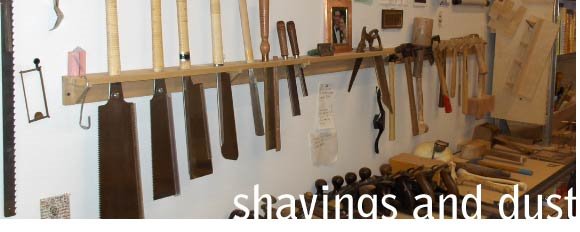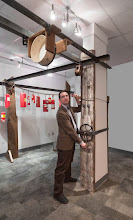i got this email from a colleague a couple of weeks ago:
Hello Zeke-
I had a large hickory taken down in my side yard today. My friend with the mobile mill could saw it up for you if you want to buy it. Don’t know how many board feet yet. It was a bit dark by the time I got home so I’ll pace it off in the morning.
Best-
Don
I had a large hickory taken down in my side yard today. My friend with the mobile mill could saw it up for you if you want to buy it. Don’t know how many board feet yet. It was a bit dark by the time I got home so I’ll pace it off in the morning.
Best-
Don
Well, of course I wanted to buy it. Last Friday night I went over to his house and helped him roll four huge chunks of tree down the hill around a couple of trees to an access road on his property. It was a solid couple of hours of work, freshly cut trees are filled with water and VERY HEAVY. We figure it was a couple of tons of wood at least. This hickory had been growing for a hundred years in a stand of forest, and had been reaching reaching reaching to get at the sun, so the trunk was long and straight as an arrow, perfect for making into lumber. When we got the four pieces of trunk to their final resting place they looked like this:


The place they came from is about halfway up the hill, which does not seem that far away in the photo, but trust me it was a feat to move these logs around. Yesterday I met George Chrysler. George is a tool maker for a local tool and die company, and "for fun" owns a portable saw mill called a Wood Mizer. Here is George having fun:
A Wood Mizer is a saw mill made by a company in Indianapolis. Their motto is "Making Dreams Come True," and they sure are doing that for me. A Wood Mizer saw mill is made to be towed behind a pickup truck, and George's can handle logs that are 30" in diameter and fourteen or sixteen feet long. Big logs. My hundred-year-old- hickory tree was not quite so big, but it was a pretty good size, about twenty inches in diameter at the base.
So on a beautiful, sun dappled, cool autumn Saturday morning, I meet George out in the woods, and we get started. We had a six hour conversation as we turned a tree into dimensional lumber, about the saw mill itself, about trees, about how I was going to use the lumber, about whether it was more important to get as much lumber as possible or to get more interesting boards. A good time was had by both, I think. And I got to be a part of choosing how the log was made into boards, specifying that some of it be cut for table tops, and other parts to be cut thinner, or thicker. We would turn the logs this way and that to get the best cut, or we would just start at the top of the log and work our way down, slabbing the entire tree into planks.
It was, I have to say, way better than a party. Here is a short video of one way to make lumber:
Here is a video from the other side:

By three o'clock in the afternoon, we had made quite a pile of hickory boards, with its white sapwood and fleshy pink heartwood seeing the air for the first time ever. Hickory has a slightly sour but sweet smell when you cut it, and that smell hung over the whole area as the sawdust swirled in the sun and the breeze and the stack of wood got higher and higher.
Next weekend I will move the pile somewhere that it can sit and season, which will likely take two years or more, unless I dry it in a kiln. Then it will be ready to make into tables and cabinets and benches and shelves, objects "of use" or of beauty that we hope will last another hundred years or more.
Throughout this process I could not help but be put in mind of the way boards were made not long before this tree was planted. The image of a man standing on top of the log and another standing underneath it and sawing by hand board after board was in the front of my mind all day, the realisation that what were doing with the Wood Mizer in forty five seconds at one time would have taken two men the better part of an hour. That looked like this:

I felt lucky to be where I was, to be surrounded by people that understand the importance of what Eric Sloan calls "The Reverence for Wood," to be given the gift of involvement in the process in this way. So few woodworkers or furniture people see the material they use as trees, or live with them through the becoming process, all the way down to the finished object. It is a special responsibility I feel, and a heavy one, to do this tree proud, now that I have been part of making it into lumber. The thing that I try to impart to my students is this, though: All the wood around us came from trees. Even the particleboard. Even the two-by-fours that you can not see behind the sheetrock in the wall of the room you are sitting in. All of the steel was ripped from underground. All of the copper in this computer had a genesis and a venerable life.
Losing sight of those beginnings, disassociating ourselves from where things come from, weakens our bonds to and our understanding of the importance and the impact of the things around us. Strengthening our connection to raw materials and their genesis helps us to understand how tenuous our grip on the world is, and helps me, at least, remember what my place is, and what my duty is.



No comments:
Post a Comment